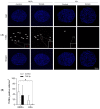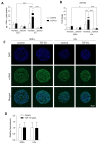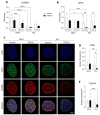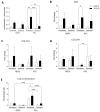Is Spheroid a Relevant Model to Address Fibrogenesis in Keloid Research?
- PMID: 37760792
- PMCID: PMC10526056
- DOI: 10.3390/biomedicines11092350
Is Spheroid a Relevant Model to Address Fibrogenesis in Keloid Research?
Abstract
Keloid refers to a fibro-proliferative disorder characterized by an accumulation of extracellular matrix at the dermis level, overgrowing beyond the initial wound and forming tumor-like nodule areas. The absence of treatment for keloid is clearly related to limited knowledge about keloid etiology. In vitro, keloids were classically studied through fibroblasts monolayer culture, far from keloid in vivo complexity. Today, cell aggregates cultured as 3D spheroid have gained in popularity as new tools to mimic tissue in vitro. However, no previously published works on spheroids have specifically focused on keloids yet. Thus, we hypothesized that spheroids made of keloid fibroblasts (KFs) could be used to model fibrogenesis in vitro. Our objective was to qualify spheroids made from KFs and cultured in a basal or pro-fibrotic environment (+TGF-β1). As major parameters for fibrogenesis assessment, we evaluated apoptosis, myofibroblast differentiation and response to TGF-β1, extracellular matrix (ECM) synthesis, and ECM-related genes regulation in KFs spheroids. We surprisingly observed that fibrogenic features of KFs are strongly downregulated when cells are cultured in 3D. In conclusion, we believe that spheroid is not the most appropriate model to address fibrogenesis in keloid, but it constitutes an efficient model to study the deactivation of fibrotic cells.
Keywords: ECM; TGF-β1; fibrosis; keloid fibroblast; spheroid; α-SMA.
Conflict of interest statement
The authors declare no conflict of interest.
Figures





References
-
- WHO ICD-11 for Mortality and Morbidity Statistics. [(accessed on 27 July 2023)]; Available online: https://icd.who.int/browse11/l-m/en#/http%3a%2f%2fid.who.int%2ficd%2fent....
Grants and funding
LinkOut - more resources
Full Text Sources
Research Materials

